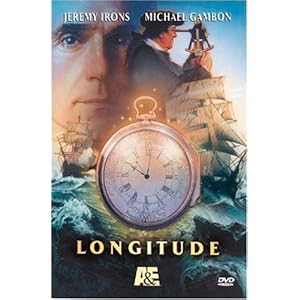Sea Clocks: The Story of Longitude
Author: Louise Borden
Illustrator: Erik Blegvad
Published: In 2004 by Margaret K. McElderry Books
ISBN: 978-0689842160
Synopsis:
 |
H5: Harrison's final creation. The
long sought after solution |
Determining a ship's location while out at sea was an "unsolvable" problem captains and merchants faced for hundreds of years. Although sailors could determine their latitude (how far north or south they are from the equator), they were unable to determine how far east or west they had traveled (longitude) and therefore where unable to calculate their location at sea. It was such a HUGE problem the English Parliment offered to award 20,000 pounds sterling to whoever could find a solution. But no one knew how to solve this problem, at least not until John Harrison, the oldest son of a rural carpenter and maker of fine clocks in England, took an interest in it. He believed it could be solved mechanically, by making a seaworthy clock. He spent his entire life perfecting his designs which eventually changed the face of sea travel forever.
Sea Clocks: The Story of Longitude presents a detailed account of the long and arduous development of the sea clock and the race to find an answer to this problem.
My Reaction:
 |
| John Harrison |
This is quite an informative book. Before reading it I had not understood how longitude and latitude to are used to determine location while at sea or thought how difficult it was to create accurate clocks. It was something I had always taken for granted. But
Sea Clocks: The Story of Longitude gave me a new perspective.
 | | | |
|
| H1: Harrison's first sea clock |
Did you know that when when traveling by sea you can use time to determine your latitude? In order to do this you need to have an accurate measure of the current time where you are and the current time of the home port that you left from. The difference between the time will tell you how man degrees of longitude (travel in the east/west direction) you have traveled. For instance, if you were traveling west and there was a three hour difference it would mean you were 45 degrees west of the port. I really enjoyed these kind of scientific tidbits. Furthermore, this book does an excellent job of contextualizing this scientific development within history. It explains the 18th century stance on finding an accurate measure; it was so important to the English they decided to offer a reward of 20,000 pounds sterling (several million dollars today) to anyone who find a reliable solution to this problem.
 |
H3: Harrison's third attempt at
making a sea clock |
Unfortunately, there is no clear documentation of where or how Borden collected this information. Although her author's note tells us where Harrison's five clocks (H1, H2, H3, H4 and H5) are located today it does not give an indication of where she learned this information. My guess is that this book may have been written prior to the huge demand for references lists and/or other evidence of research.
 |
| H4: Harrison's first sea watch |
Another thing to note about this book is that the illustrations are not the most informative. In fact, they can be a bit confusing at times because they depict images of antique tools without indicating what they are or what they were used for. If it were not for my boyfriend, who has a better historical background in naval history I would have had no idea what these tools. I wish the illustrator had thought about how uncommon many of these tools were, because the lack of identification detracts from the books reliability.
My Rating (1-5 stars): 


Still Curious:
If you are interested in learning more about the construction of the Sea clocks or chronometers or want to know more about John Harrison's life check out some of the following resources:















No comments:
Post a Comment